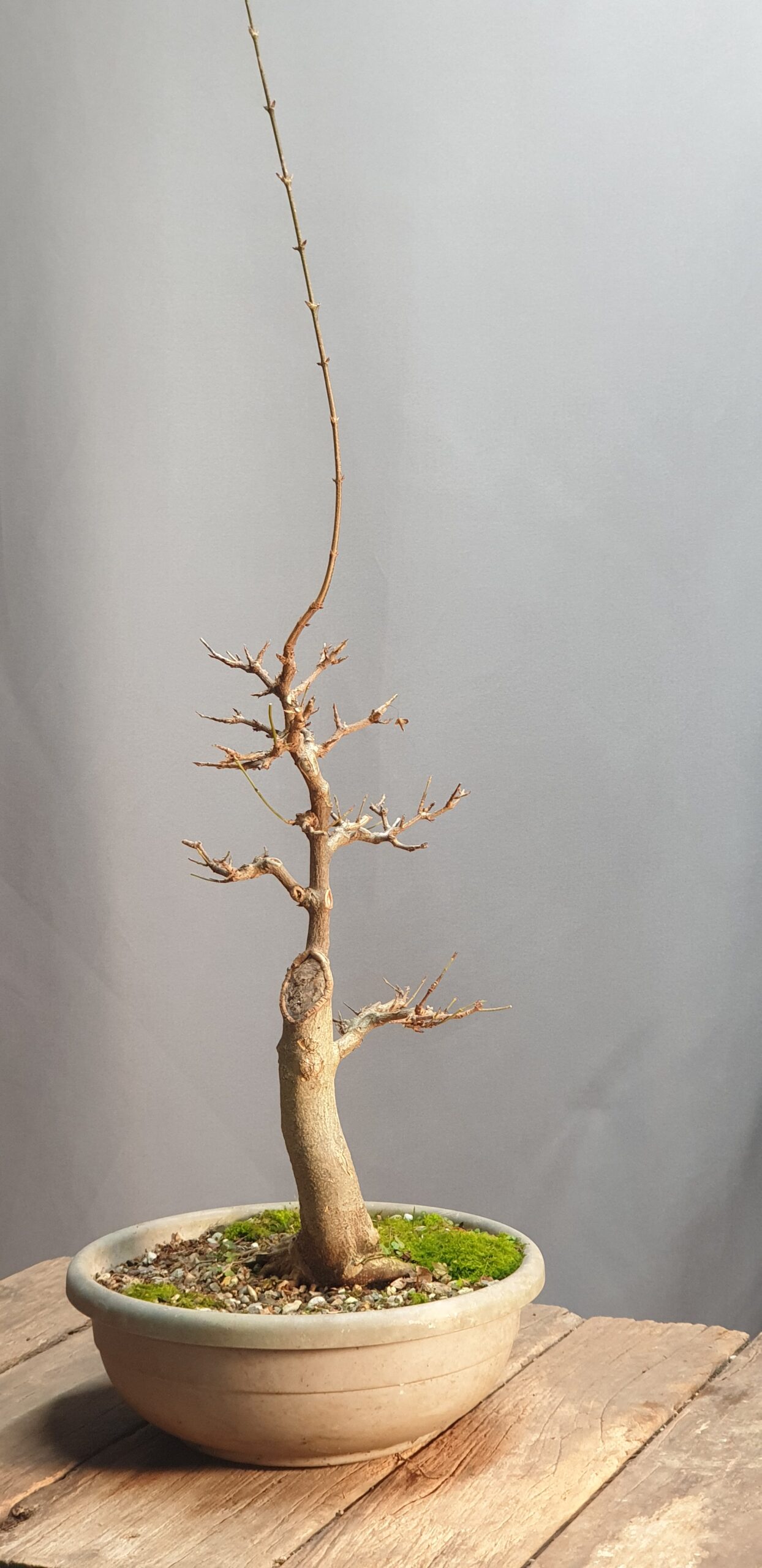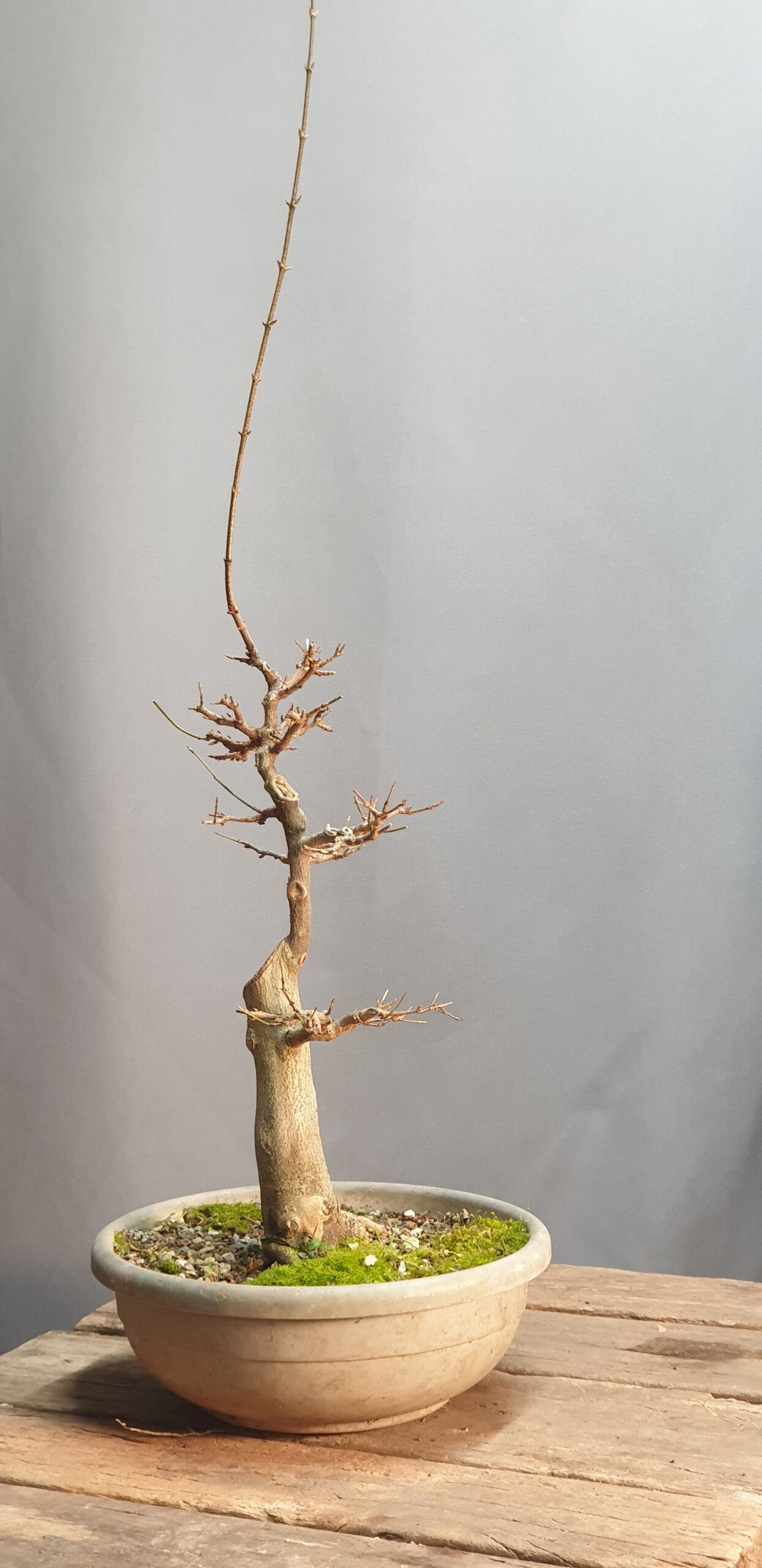Acer Buergerianum Bonsai – Moyogi Style
Acer Buergerianum: also called Trident Maple, or Kaede, it is much appreciated as a bonsai due to its elegant three-pointed leaves, exfoliating mature bark, and spectacular seasonal color variation. A very vigorous tree, it responds well to most bonsai techniques and is particularly fast in closing big wounds, a very desirable feature when creating trunks with strong taper and great movement. Easy to grow and care for, it is ideal for bonsai lovers at any level of experience.
Specimen Bonsai: What you see is what you get. This plant stands out for its unique characteristics, so we uploaded the actual pictures and video for you to have all the info you need to make your preferred choice. Feel free to contact us if you need more info on this specific item.
Informal Upright/Moyogi: Arguably the most common bonsai style due to its essential and natural look. A single, upward-growing trunk with branches raising from the exterior of trunk bends.
270,00 €

Online Support
Find answers to the most frequently asked questions with Luca.

Europe Shipping
Free shipping from 70€ read terms and conditions.
Position: Full sun. Protect from extreme afternoon sun during hot summer if the plant has been recently repotted or is not completely established. During winter, protect pots from extreme frost as roots are not as hardy as that of Japanese maples.
Watering: Frequent and regular, particularly in summer. Soil should not completely dry out between waterings. Observe and rely on leaves turgidness to read the plant watering needs.
Feeding: Depending on the desired growth rate, high nitrogen fertilisation after leaves appear in spring can be very effective, though leaf and internode sizes can get disproportionately large. A more balanced, less frequent fertilisation is advisable during the rest of the year until leaf drop.
Repotting: When buds start swelling in spring, roots can be pruned aggressively and old soil can be removed completely. Repot mature specimen every 2-3 years, young ones more frequently.
Soil Ph: Slightly acidic to neutral.
Pruning: Healthy specimens require continuous, aggressive pruning to keep the canopy in shape, avoid interior twigs to die from absence of light, balance the strong apical dominance and construct/maintain a very detailed ramification. Cut back to the first pair of leaves after shoots have elongated to at least 4 to 5 pairs, from late spring to autumn. Thick branches can be pruned/chopped from late spring to late Autumn. Pinching and defoliation techniques can also be applied on healthy, vigourous trees to reduce leaf and internodes size.
Wiring: Young branches are very flexible and can be bent easily all year long. Extra care should be used though as branches thicken very quickly and wire-bite marks are very persistent.
Pests and Disease: High humidity level could favour the formation of fungal infections, mildew being one of the most common. Aphids on spring new growth and mites are also frequent visitors. Excessive sun exposure and drougth can cause leaf scorch during hot summers.
| Style |
|---|























